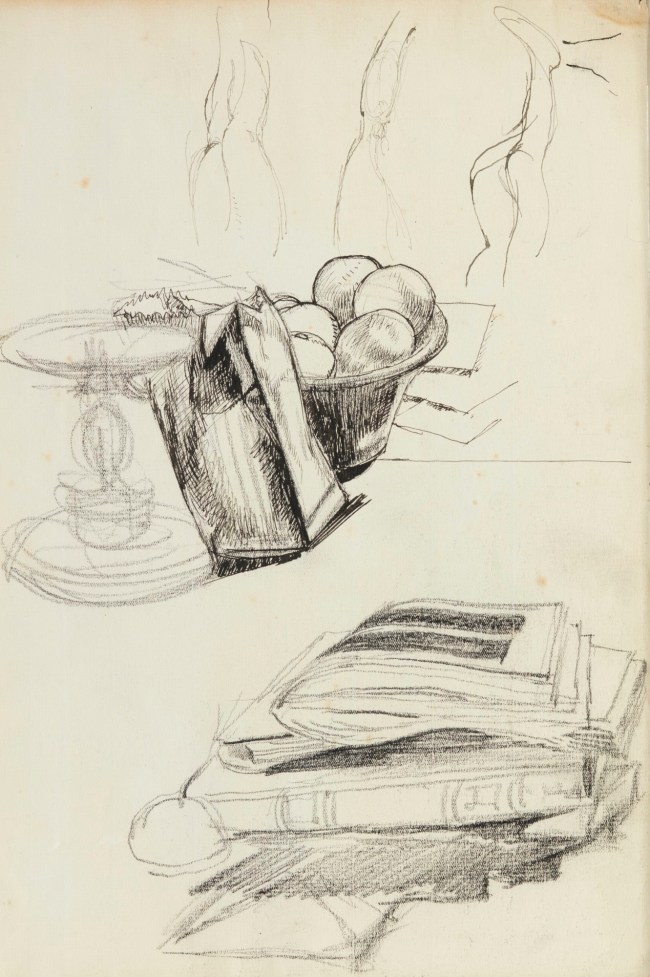Creative tips for still life drawing
Creative tips for still life drawing
By Mark Hampson
Published 7 May 2021
As he joins us for the first instalment of our online Saturday Sketch Club, Mark Hampson gives us some practical advice on how to improve your still life drawing.
-
-
1. Start with what interests you
Choose objects to draw that interest YOU, not ones that you think look like historical still life subjects chosen by other artists. Sometimes quoting from these traditional works can be interesting but select a set up with personal significance and individual meaning.
To me Art’s subject is the human clay,
And landscape but a background to a torso;
All Cézanne’s apples I would give away
For one small Goya or a Daumier.
W.H. Auden
-
-
-
2. Explore your object
“No object is mysterious. The mystery is in the eye.” – Elisabeth Bowman.
Look for an object’s physical and formal potentials and consider different shapes, scales, surface textures and material qualities to see what they can offer toward making an interesting image you may enjoy.
You may want to select a variety of objects that create interesting collisions of contrasting information or alternatively related collections of objects that repeat certain properties, rhythms, and themes that sit together in visually satisfying ways.

-
-
-
3. What’s your angle?
Once you’ve decided on a design, begin to think about where you will draw from and experiment with different angles
Walk around it and look at it from a variety of distances. You may wish to view it from the side at a very acute angle, low down or from a bird’s eye view.
Consider what these alternative vantage points offer you in terms of composition, dynamism and different ways of seeing.

-
-
-
4. Experiment with shadows
Search out the shadows in your still life and exaggerate them with dramatic and directional lighting.
The shadows will give your set up vitality and impact. You don’t need to understand the different types of shadows but try and identify the various ways that shadows operate, their colour, density and comparable transparencies.

-
-
-
5. Look, watch and see!
Once you’re happy with the setup, the lighting and the compositional angle, really focus on what you are drawing.
Scrutinise the relationships between the objects that you have chosen, their proximities, overlaps, and comparable proportions.
Watch how the light affects them and how the shadows move over them. Teach yourself to look at all the facts of the scene as this will allow you to properly see.

-
-
-
6. Consider how colour is shown in black and white
Look at how the colours of the objects affect the drawing’s tonal range.
Even if you’re drawing in glorious monochromatic pencil, the colours of the objects will affect and inform your decisions. Try squinting at the still life in order to turn down the hues while simultaneously exaggerating the highlights and amplifying the shadows of the objects.

-
-
-
7. Try something new
“I shut my eyes in order to see.” – Paul Gauguin.
Although still lives are essentially exercises in observational rendering you can still experiment with other ways of depicting them.
Practice working blindly, denying the relationship between eyes and hand; work from memory, using alternative physical approaches to create marks and have fun with the facts!
All of these will result in new artistic discoveries.

-
-
-
8. Seek out the core shapes
Getting started on a drawing is often the hardest aspect.
A good way to begin is to search out the basic forms that best describe the shapes of the objects you are observing. Think of these as building blocks. Look for the core shapes; circles, squares, rectangles and triangles.
Lightly map these out on your page to create a compositional outline or skeletal structure. Start with the largest shapes and overtime work towards the smaller descriptive forms. By starting with a light sketch this will make it easier for you to correct and adjust anything you want to change.
Once you have established these initial marks you are free to experiment with confidence and take the drawing on any journey you wish.

-
-
-
9. Find your own drawing style
People often ask how to draw. The answer to this question is complicated, subjective and will inevitably divide artistic opinion.
If you want to learn how to draw in a technical manner or in a traditional academic fashion then there are endless books and online resources and ‘How to’ guides available.
Perhaps considering how not to draw and how to unlearn technical formulas, and inherited approaches is more interesting. How can you draw in ways that challenge these histories? What can your personal, natural or unique drawing style look like? Experiment to find out!

-
-
-
10. Exaggerate, animate and imagine
As part of your experimentation, think about the imaginative possibilities of the still life and how you can use the information you have in front of you to invent new images and extended compositions.
Don’t be afraid to exaggerate, animate and imagine what else the objects can be in order to invent new forms, unexpected scenarios and fantastical creatures from strange worlds.

-
-
-

Join our free Saturday Sketch Club
After a difficult year, we want to celebrate our community. Join Mark Hampson and our other artist tutors live from the Royal Academy for the opportunity to be inspired and get creative, using drawing materials you’ll have at home.
Each online Saturday morning session will be led by a different artist, and you’re welcome to drop into as many or as few as you’d like. All you’ll need is a pencil and paper, with each session exploring different techniques and styles.
-










